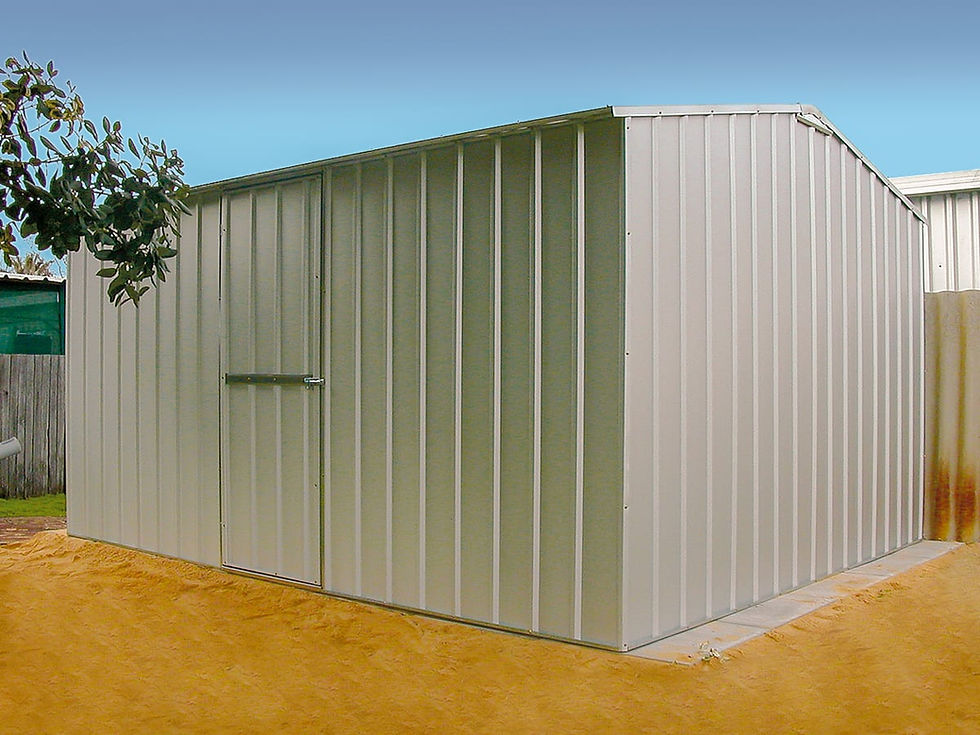Durable Rainwater Tanks for Sustainable Water Storage
- zoehsewell
- Jan 7
- 3 min read
Updated: Nov 13

As homeowners increasingly invest in earth-friendly practices, a growing interest has developed around the concept of rainwater harvesting systems. Prompted by yet another season of relentless summer heat and the escalating water bills, have you ever caught yourself staring at the downpour outside and wondering, what if there was a way to tap into this veritable waterfall? Now, what if this captured water was not only readily available for your home use but also helped reduce your reliance on municipal water? Intriguing, isn't it?
This, dear reader, is the magic of rainwater harvesting—a centuries-old practice, now given a modern spin with durable rainwater tanks. This blog is not just about why, how and when you should invest in such a system, but it's about embracing sustainable living, understanding water conservation, and taking significant steps towards home improvement.
The Why Behind Rainwater Tanks: Unveiling Green Practices
The idea of harvesting water is as old as human civilization with countless societies utilizing it to counter water constraints. But these days, the need for durable rainwater tanks goes beyond mere water preservation. Increasing water expenses, growing environmental concerns, and the urge to become independent of the municipal water supply are all driving factors. More importantly, these tanks have proven to be a boon in regions where water scarcity is a recurring issue, ensuring a consistent supply when required.
The benefits do not stop with home use. The curb appeal of your home could improve by installing these rainwater tanks, enthusing potential buyers who value green infrastructure. Also, quite a few states also offer incentives or rebates for homeowners who install such systems, making it a financially viable decision.
A Deep Dive Into Durable Rainwater Tanks
Rainwater tanks not only store water but also filter out debris and other contaminants, ensuring the stored water is safe for use. Tanks come in various shapes, sizes, and materials, such as polyethylene (plastic), metal, fibreglass, or concrete, each with its own pros and cons. Poly tanks are cost-effective, metal ones are durable, and concrete tanks are said to improve the water's taste, offering plenty of choices to consider.
Installation Time: When, Where, and How?
The process of installing a rainwater tanks is as essential as the decision to purchase one. Several factors come into play like the size of your roof, the average rainfall in your area, the tank size required based on your water needs, and the ideal installation location. It's best to consult with an expert or contractor to make an informed decision.
Knowing the Pros and Cons
Like every other home improvement choice, rainwater tanks have their pros and cons. They provide an alternative water source and cut back on the water bill. Yet, they require regular maintenance and there's the initial cost to consider. But with careful planning and smart choices, the pros outweigh the cons.

The Impact on Architecture and Aesthetic
One might wonder if these tanks would stick out like a sore thumb, disrupting the aesthetics. On the contrary, the latest designs are both functional and visually pleasing. They can be cleverly camouflaged to blend in with the surroundings or treated as a standalone feature enhancing the architectural appeal.
Necessary Regulations and Permissions: Treading Mindfully
Before you rush to install your rainwater tank, remember to check with your local council regarding regulations and permissions. Navigating these legalities will assure that your installation is fully compliant and trouble-free.
Conclusion
The question is no longer whether rainwater tanks are a worthy investment—clearly, they are. It's more about how we align our choices with lifestyle requirements, environmental conservation, and sustainable home improvement. Whether it's about saving on water bills, becoming self-sufficient, or making a valuable addition to your home, the advantages of having a durable rainwater tank are indisputable. In this venture towards sustainable living, let's not forget: every drop saved contributes to a sea change for our planet. Let's keep dancing in the rain, shall we?








Comments